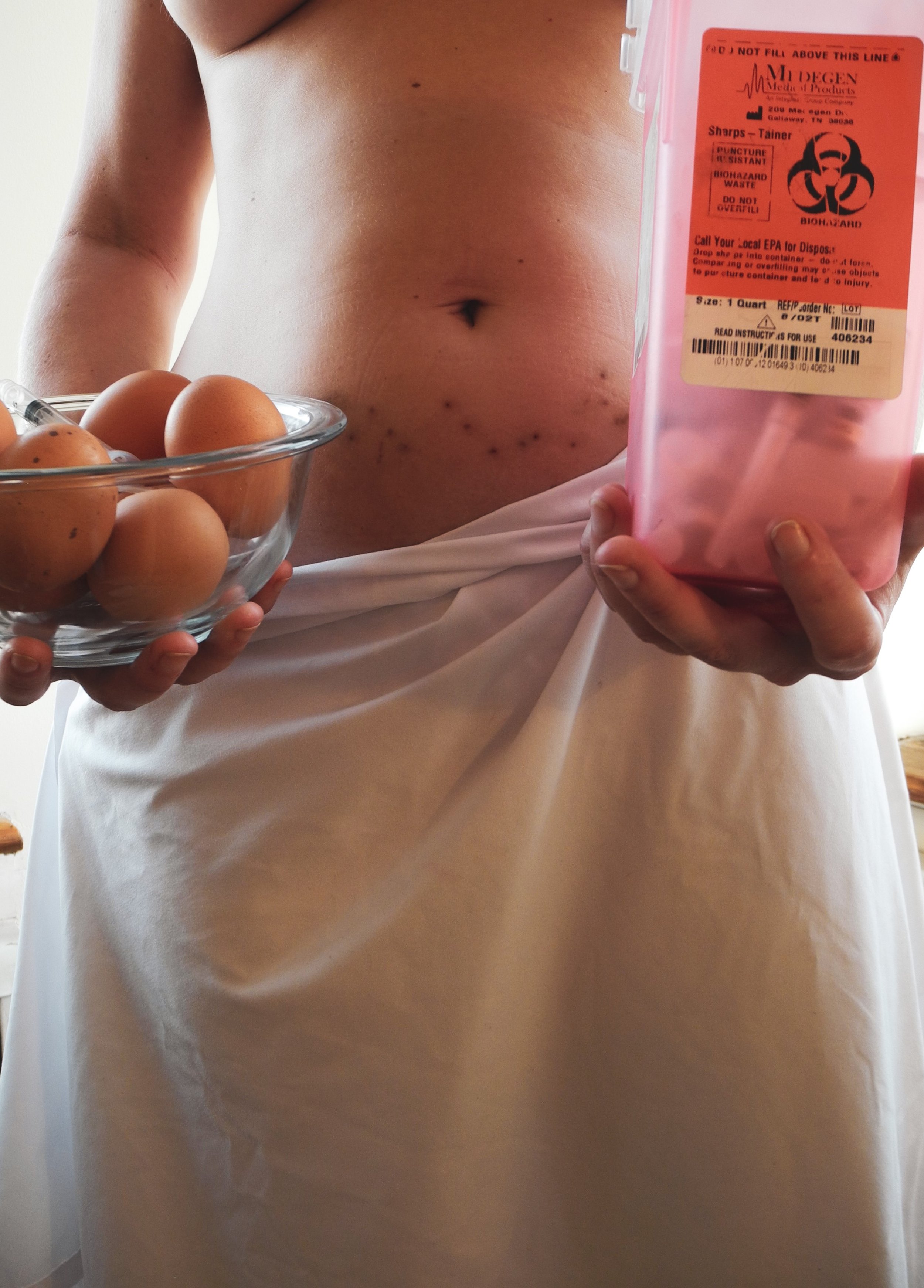Below are samples from photography series and performance:
Caileigh’s Tarantella
Caileigh’s Tarantella” explores dancer and breast cancer survivor Caileigh Scott’s use of movement as a spiritual, emotional, and physical healing practice during and after treatment. The series draws from the origins of the Tarantella—once a frenzied ritual dance believed to cure the bite of a tarantula, now preserved as an Italian folk tradition. The original affliction, known as Tarantism, spread ecstatically through bodies and streets alike—an ancient echo of collective somatic release.
In this series, the spider bite becomes allegory for Caileigh’s diagnosis; dance, her medicine. Lace and orchids recur throughout the work, embodying the tension between vulnerability and defiant sensuality that she maintained throughout her healing.
The first chapter of the series focuses on Caileigh’s torso as an altar—photographs that pay homage to her body as a site of transformation, endurance, and grace. The second presents stills from a modern Tarantella she choreographed in collaboration with fellow breast cancer survivor Anna Wassman-Cox, founder of OncoBallet Foundation. In a few images, Caileigh even becomes the tarantula itself, drawing power from the dark. The third chapter is a performance film, set to music mixed by Caileigh and captured by Jacarrea Garraway, with edits by Christl Stringer.
The series brings together ancient ritual with contemporary science: dance is now studied as a treatment for neurological conditions like Parkinson’s.
Body as Altar Series / “The Same Divine Stuff As You” Performances
This project exists both as live participatory ritual and as a photographic series. The resulting images serve as intimate records of each individual’s chosen site of devotion.
Inspired by a passage in “The Radiance Sutras,” a text offering 112 different doorways into meditation, the project aims to turn the idea of ritual devotion toward the self. Participants select a part of their body that they wish to celebrate, heal, or soften their relationship with, and adorn it with flowers, shells, emblems, and other offerings. Some photographs from this series were created in private with artist friends, and some were created with participants of public performances with TransBorderArt (2023), ChaShaMa (2024), and Art in Odd Places (2024).
Venus Fertility Series
This series is an intimate documentation of the eve of my friend’s egg retrieval procedure. After injecting her stomach with estrogen (a shot called “depo estradiol”) for just under two weeks, a constellation of bruises formed a crescent moon around her lower belly. In photographing the bruises and curvature of her stomach for posterity, I was reminded of Venus fertility figures; in particular, the Venus de Milo. My roommate’s bruised torso personified for me not only a modern and empowered version of the timeless fertility figure, but also the unseen and ongoing sacrifices one makes to become a parent. The work uses the archetype of Venus, goddess of beauty, fertility, and love, to cast the IVF journey in an empowered and ethereal light, pushing against the taboos around conceiving beyond a person’s twenties.
The Bathers
“The Bathers” series resituates the art historical Bathers genre in the context of ecofeminism. The classical Western “Bathers” genre of painting, established over hundreds of years, heavily featured nude, white, unblemished, surprised, or unaware women lounging in idyllic landscapes or bathhouses, voyeuristically captured by male artists. Ecofeminism is a movement that explores the social, political, and symbolic connections between women and nature. Bringing together feminism and environmentalism, ecofeminism argues that the domination of women and the degradation of the environment are consequences of patriarchy and capitalism. Ecofeminism promotes ideas of equality between all human and non-human life forms.
“Jessica Duby’s photographic series takes on the art historical subject of female bathers in a more expansive, feminist way. Created during the pandemic, the artist advocates for the importance of connecting with nature through immersion—from living with plants at home, to swimming in the ocean and forest bathing.” – Curator Gabriel de Guzman, from his curatorial statement for Site: Brooklyn’s “Visions of Nature” exhibition, 2024
“Oh, Cassandra” Trailer for a performance on Governor’s Island in 2023
“Oh, Cassandra” tells the story of the day the ocean currents stop. Through a reinterpretation of the Greek myth, Cassandra, a world full of million-dollar medical appointments, divorce announcements, dancing mania, and more is presented.
artist statement
My work explores the intersections of nature, identity, and the human form through themes of embodiment, devotion, and feminine archetypes. Drawing from ritual practices and myth, I create performances, photographs, and videos that center the body as both site and symbol. Recent series engage with altar-making, bathing rituals, and the embodied reimagining of feminine motifs from Western art history.
I am guided by Clarissa Pinkola Estés’ words: “While much psychology emphasizes the familial causes of angst in humans, the cultural component carries as much weight, for culture is the family of the family… cultura cura, culture cures. If the culture is a healer, the families learn how to heal; they will struggle less, be more reparative, far less wounding, far more graceful and loving.”
In this spirit, my work seeks to surface inherited wounds while proposing new rituals of care, sensuality, and re-connection.























